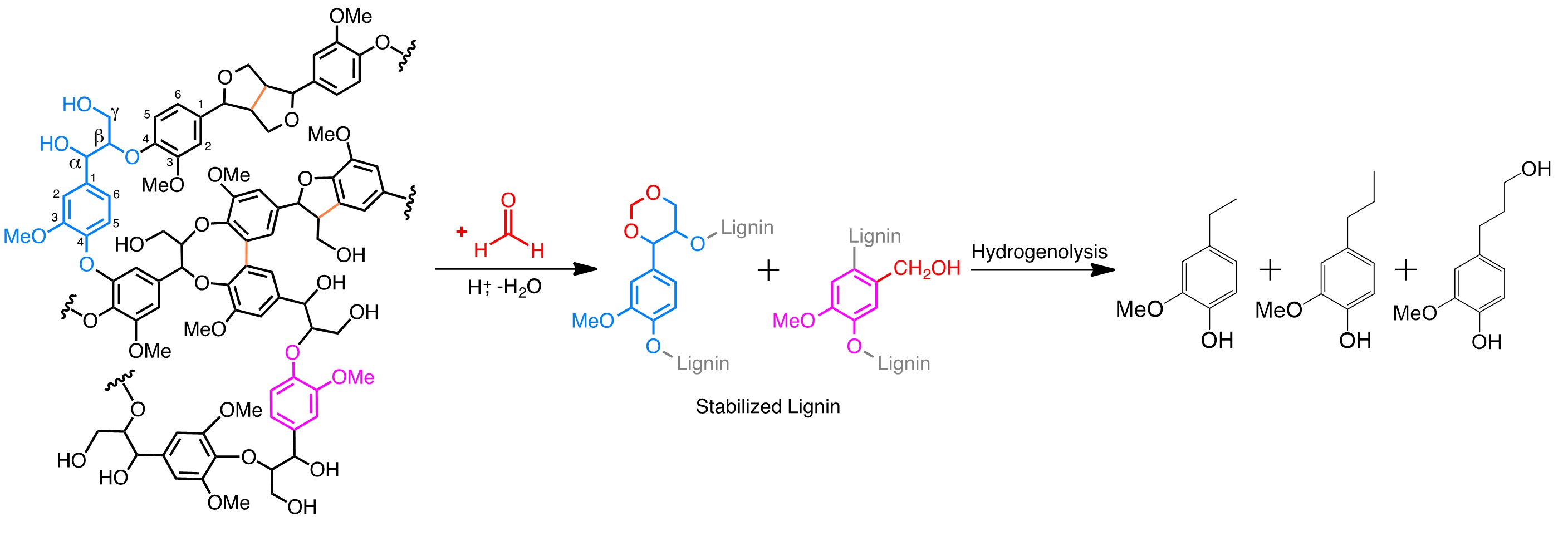Quantitative depolymerization of uncondensed technical lignin under mild conditions
Lignin is a natural amorphous polymer that provides the structural strength and integrity for plant matters. Its content in biomass is 15-30% by mass and up to 40% by energy. This component is a significant renewable source for production of bio-chemicals. Conversion of lignin to higher value added chemicals is mainly based on two steps: lignin extraction from biomass and catalytic conversion through reduction (hydrogenolysis) or oxidation.[1] Lignin condensation is a drawback in the extraction step which is caused by formation of inter-unit carbon-carbon linkages and can reduce lignin monomer yields dramatically. Furthermore, catalytic biomass deconstruction and lignin hydrogenolysis requires high temperatures (250 ᵒC) and energy.

Based on a recent discovery, the utilization of formaldehyde during biomass pretreatment avoids lignin condensation and provides stabilized organoslv lignin monomers. Figure above represents the stabilization of lignin monomers by formaldehyde and the products after hydrogenolysis.[2] This research studies the possibility of performing hydrogenolysis under mild condition (120 ᵒC) by considering the effect of temperature, reaction media and heterogeneous catalyst on the hydrogenolysis of biomass derived lignin.
[1] Joseph Zakzeski, Pieter C. A. Bruijnincx, Anna L. Jongerius, and Bert M. Weckhuysen, Chemical Reviews, 2010, 110 (6), 3552-3599
[2] Shuai Li, Masoud Talebi Amiri, Ydna M. Questell-Santiago, Florent Héroguel, Yanding Li, Hoon Kim, Richard Meilan, Clint Chapple, John Ralph, and Jeremy S. Luterbacher, Science, 2016, 354(6310), 329-333.